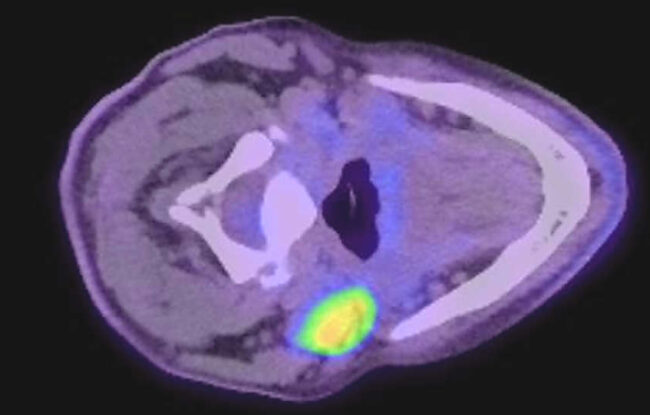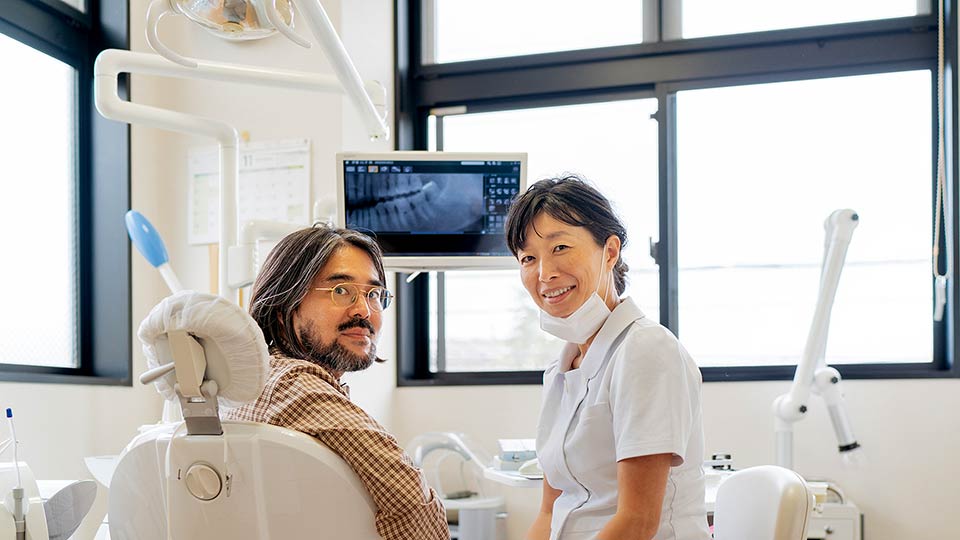- In July I successfully dosed the first Australian patient with tigilanol tiglate at The Kinghorn Cancer Centre, Sydney as part of QBiotics’ multi-centre Phase I/II clinical trial in patients with Head and Neck Squamous Cell Carcinoma (HNSCC)
- The Phase I/II clinical trial is a multi-centre, dose escalation study designed to determine the optimal dose, safety, and tumour response to tigilanol tiglate
- The QB46C-H03 trial is being run at sites in Australia and India
- Eligibility criteria can be found by visiting Australian New Zealand Clinical Trials Registry (ANZCTR)
I am delighted that we have finally been able to commence this trial which offers promising benefits to a wide range of head and neck cancer patients even those with unresectable tumours (unable to be removed by surgery). Initially we are focusing on head and neck squamous cell carcinoma (HNSCC) of the oral cavity and skin which are easy to access which minimises any risk to patients if there are any unwanted side effects. That’s why it is a phase 1B/2 clinical trial.
Eligibility
I know that many people reading this blog will be patients and carers searching for information about clinical trials, so I will discuss eligibility up front. Patients suitable for this trial must have;
- A confirmed HNSCC accessible and amenable for intratumoural injection (except for pharyngeal, laryngeal or base of tongue [back third of the tongue] tumours and those tumours in the anterior neck), that meets at least one of the following:
- failure to respond to at least one round of conventional therapy; or
- no available standard therapy; or
- patient declined standard therapy after appropriate counselling (with the decision documented); or
- patient awaiting surgery or therapy or is explicitly being monitored with the aim of delaying therapy.
- Eastern Cooperative Oncology Group (ECOG) performance status of 0 to 2;
- Life expectancy more than 12 weeks.
Full eligibility and contact details can be found by visiting the Australian New Zealand Clinical Trials Registry (ANZCTR) and searching for QB46C-H03.
About the trial
Surgery is currently the mainstay for HNSCC, however in many cases the tumours are unresectable (unable to be removed by surgery), can be disfiguring, or patients may be too unwell for surgery. Therefore, there is a significant need for new treatments that can remove unresectable tumours, especially in the head and neck region, to preserve a person’s appearance, as well as critical functions such as sight, hearing, speech, and swallowing. Tigilanol tiglate is administered directly into the tumour mass, which limits exposure and damage to surrounding healthy tissues, and reduces the risk of functional or cosmetic impairment as well as reduced systemic toxicity.
The Phase I/II open label “QB46C-H03” study, is a dose escalation study in patients with HNSCC aimed at determining the maximum tolerated dose (MTD) and recommended dose level for further studies. The study will also investigate safety, tolerability and tumour response following a single or multiple (two to three) doses of tigilanol tiglate.
My role
I am proud and excited to be Principal Investigator in this study. Clinical trials are always encouraging for practitioners and patients because they carry the promise of hope. This study is particularly important to me because it has the potential to improve quality of life for patients after treatment. Every surgeon wants to avoid destructive surgery which can compromise a patient’s quality of life. So a simple, intratumoural injection is very appealing advance.
About Qbiotics
QBiotics Group Limited is a public unlisted Australian life sciences company which discovers, develops, and commercialises novel anticancer and wound healing products for human and veterinary markets. Its lead product, tigilanol tiglate, is an anticancer pharmaceutical targeting a range of solid tumours across multiple species. QBiotics’ business model is to develop products that have application in both veterinary and human markets. Success in the veterinary programs validates QBiotics technology and de-risks human development, while generating early, non-diluting revenues.
About tigilanol tiglate
Tigilanol tiglate is a novel, small molecule that is being tested as an intratumoural injection treatment for solid tumours. Its effect on tumours is multimodal and involves direct local effects on the injected tumour as well as effects on distal, non-injected tumours. Complete destruction of the injected tumour is mediated via tumour vascular disruption as well as death of tumour cells by oncosis1. Following tumour destruction, rapid wound healing has been shown to ensue.
A single injection of tigilanol tiglate has been shown in canine patients to ablate (completely destroy) 75% of treated tumours. Veterinary use of tigilanol tiglate (branded STELFONTA®) has recently received European Medicines Authority (EMA) for marketing authorisation in Europe as a treatment for canine mast cell tumours, and is also under review by the US Food and Drug Administration – Center for Veterinary Medicine (FDA-CVM) for marketing in the USA. STELFONTA® is partnered with Virbac, a global animal health company and launched in Europe in April 2020.Â
References
- Boyle et al., (2014) Intra-tumoural injection of the novel PKC activator EBC-46 rapidly ablates tumours in mouse models. PLoS One 9:e1068887. DOI: 10.1371/journal.pone.0108887.
- Panizza et al., (2019) Phase I dose-escalation study to determine the safety, tolerability, preliminary efficacy and pharmacokinetics of an intra tumoural injection of tigilanol tiglate (EBC-46). EBioMedicine 50: 433-441.
- De Ridder et al., (2020). Randomized controlled clinical study evaluating the efficacy and safety of intratumoral treatment of canine mast cell tumors with tigilanol tiglate (EBC-46). Journal of Veterinary Internal Medicine. 1-15. DOI: 10.1111/jvim.15806




